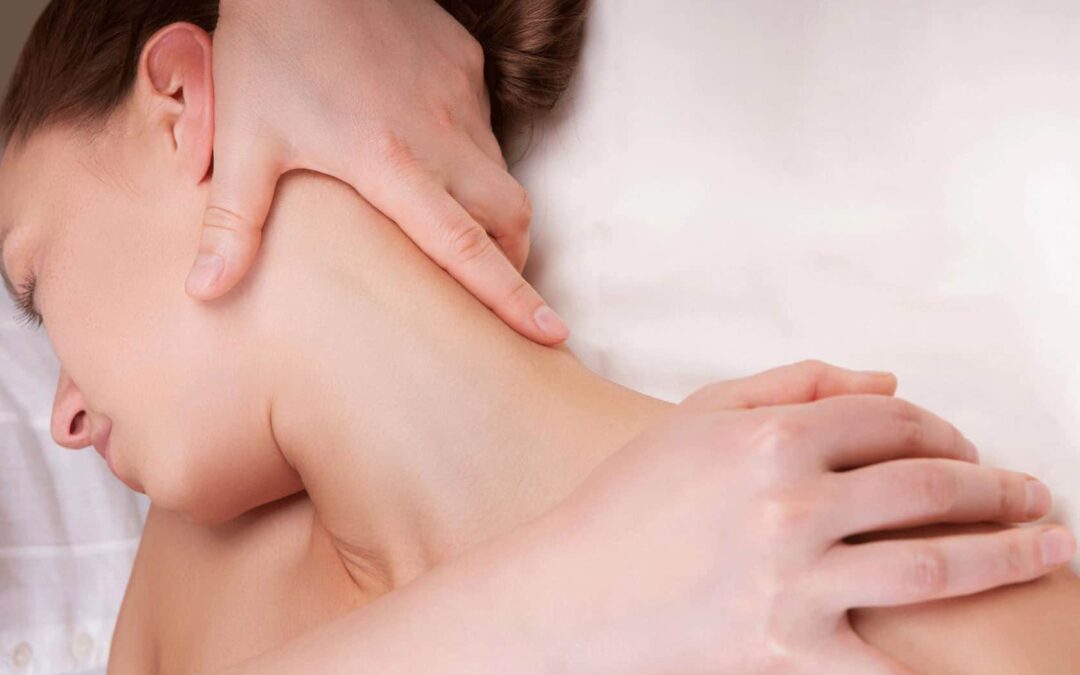Do you have neck pain?
Neck pain is an incredibly common problem: it affects a third of the population each year. Stress or muscle strain are often the culprit, and they can be ongoing. If you use pain medications, which may help the problem temporarily, remember they can have some serious risks. What is neck pain? Neck pain is just pain in the neck! Pain can be localized to the cervical spine or may radiate down an arm. All age groups are at risk of developing neck pain. People who sit in one location staring at computer screens for long periods of time may be at an increased risk. Neck pain may occur slightly more frequently in women than men.
What causes neck pain?
Your neck generally is tight because of prolonged forward head posture which puts a continuous strain on the neck and shoulders.The human head, which averages 12 pounds in weight has an effective weight on the spine of 42 pounds when it’s 3 inches forward of the shoulders. Repeated texting, emailing and gaming can literally become a pain in the neck. To avoid this strain build up your upper body and try to keep devices at eye level.
Other episodes of neck pain can be caused by the wearing out of the structures (mechanical) of the neck, which is associated with aging, or with overuse of the neck or arms. The common mechanical disorders that cause neck pain are the following: Muscle strains usually related to prolonged physical activity such as sitting at computer terminals for extended periods of time. Acute strain also may occur after sleeping in an awkward position. Other possible causes can be osteoarthritis, spinal stenosis, whiplash, rheumatoid arthritis.
Tips
Don’t wear a heavy bag on only one shoulder Watch your posture, especially when doing something for an extended period of time. Try getting a massage or putting something warm on the back of your neck Massage your neck moving up and down, or side to side. Tilt your head down and up, side to side then left and right slowly. Locate the soreness or dull ache in the muscles. Use moderate pressure with fingers or your thumbs to areas of pain. Breathe. Allow the tender point to release with moderate pressure for about 12 seconds and release. Apply moist heat after self-treatment. Stretch after applying heat. Breathe.
How to prevent neck pain
Avoid slouching or a head-forward posture. Sit straight in your chair with your lower back supported, feet flat on the floor and shoulders relaxed. Don’t sit for long periods without getting up or changing positions. Take short breaks several times an hour to stretch your neck muscles. If you work at a computer, adjust the monitor so the top of the screen is at eye level. Use a document holder that puts your work at the same level as the screen. If you use the telephone a lot, use a headset or speaker phone. Don’t cradle the phone on your shoulder. For neck pain caused by sleep habits Use a pillow that keeps your neck straight.
Special neck support pillows called cervical pillows or rolls may relieve neck stress. You can also fold a towel lengthwise into a pad that is 4 inches wide, wrap it around your neck and pin it in position for good support. Don’t sleep on your stomach with your neck twisted or bent. If you read in bed, prop up the book so you aren’t using your arms to hold it up and bending your neck forward. Consider using a wedge-shaped pillow to support your arms and keep your neck in a neutral position. Other prevention tips: If stress is adding to your neck pain, practice relaxation exercises. Consider getting a massage. A new study finds that massage can be a good way to relieve neck pain. Study suggest the most effective treatment time is about 60 minutes. Strengthen and protect your neck by doing neck exercises once a day.

 English
English Français
Français